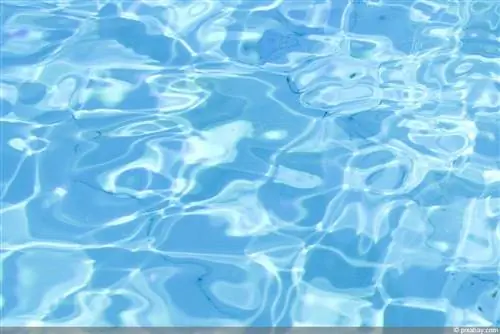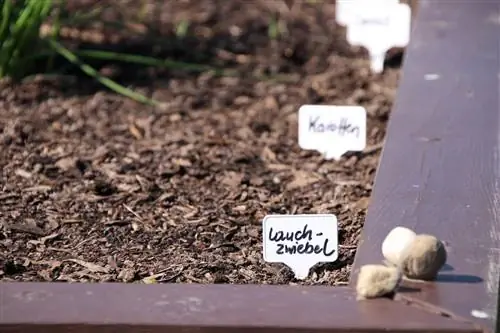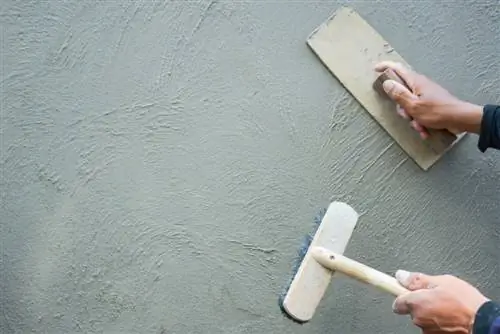- Author admin [email protected].
- Public 2023-12-17 03:39.
- Last modified 2025-06-01 06:48.
Nothing is easier than simply letting pool water drain into the garden or sewage system. But be careful, because if it contains chlorine, pool owners are required by law to adhere to certain requirements. Anyone who does not comply with this will face severe pen alties. There are different methods by which chlorinated pools can be emptied in a legally compliant and environmentally friendly manner.
Nature, environment and he alth
Anyone who simply lets their chlorine water seep out of the pool, drain into a sewer or even into a natural body of water, can not only have a negative impact on plants, but also risks the death of aquatic and terrestrial animals and leaves the groundwater mix with the chlorine. Depending on the chlorine content, the damage to nature can be immense. Especially if there is groundwater from wells or similar in the surrounding area, the chlorine can be found there and cause he alth problems. Even a low concentration of chlorine is enough to have a damaging effect on nature, the environment and he alth.
Legal situation
In principle, the introduction of chlorine water into public waste water systems, the seepage and the “disposal” into other bodies of water are prohibited by law if the chlorine content exceeds a certain limit. This is on average 0.05 milligrams per liter of water. The limits vary from region to region. It is advisable to ask the responsible environmental authority and/or the local water supplier about the maximum permitted chlorine values before disposing of pool water. Ignorance does not protect you from punishment, so this information should definitely be obtained if you do not want draining the pool to become an expensive “pleasure”.
The pool water must also meet the following conditions:
- Balanced pH value - between 5.5 depending on the region. and 7.4 (maximum limits also set by law)
- No algicides or biocides included
NOTE:
It should be noted that the limit values refer to the chlorine concentration in the pool water and not the amount of chlorine added to the water.
When to drain pool water?
Pool owners won't be able to avoid draining their pool occasionally. There can be various reasons for this:
- Thorough cleaning of floors and walls
- A water change is recommended once a year (ideal time at the start of the spring/summer season)
- Pool water has “turned over” and can no longer be made crystal clear with chemicals
- Repairing pool liner, tiles or replacing underwater lighting
Tip:
An outdoor pool should never be without water for too long. It ensures stability, especially for pool systems that can be set up, and protects swimming pools embedded in the ground from being dented by masses of earth, which can create pressure on the pool, especially when it rains.
Dispose of pool water
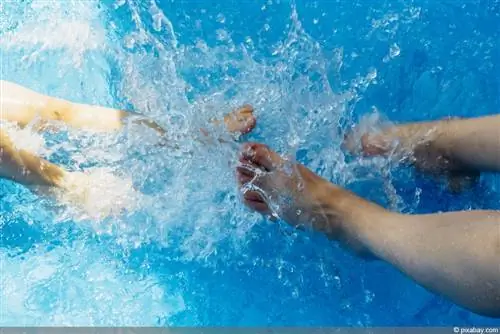
There are different methods and options here
Reduce chlorine content
As we have already learned, pool water depends on the level of chlorine content. The simplest and most effective method is to reduce the chlorine content. Proceed as follows:
- Stop chlorine doses one week before planning the draining
- Remove chlorine and chlorine residues in all dosing systems
- Choose sunny days for the project
- Cover the outdoor pool (Ultraviolet radiation from the sun causes chlorine to break down more quickly - it breaks down)
- Measure the chlorine content after seven days using a chlorine test
- If this is still above the prescribed maximum level, leave the pool without chlorine and with a cover
- Depending on the initial chlorine content, the chlorine content should have reached optimal values after ten days at the latest
- The pool water can be drained
Fill up water
If the pool is only slightly full, or if there is still enough space to fill up the water, this can reduce the concentration of chlorine in the pool. It is important to ensure that the maximum water height specified by the pool manufacturer is not exceeded. As with chlorine removal, in this case the chlorine content is measured with a test set before the water can be drained.
Swimming
Swimming a lot in your own pool lowers the chlorine level faster than in pools that are stationary. This method is recommended if the chlorine content is only slightly above the maximum limit and you want to shorten the longer waiting time of method 1. In this case, the prerequisite is to stop giving chlorine immediately. Depending on how many people swim, play and/or frolic in the water and for how long, a chlorine reduction may be possible as early as the next day or the day after.
Use the filter system
If you have a filter system connected to the pool, you can remove chlorine from the water and consequently reduce the chlorine concentration in the pool. However, this costs a few euros in energy costs because the operation of the pool pump is necessary. The following instructions show how to do it:
- Set filter system to fine filtration (if available)
- Filter the entire pool water once
- Then clean the backwash (sand filter) or filter cartridge (serves to remove trapped chlorine in the filter)
- Repeat steps 1-3 several times
- Depending on the performance of the filter pump and the choir concentration, a sufficient reduction in value can be between one and five days
- Measuring chlorine content
Balance pH value
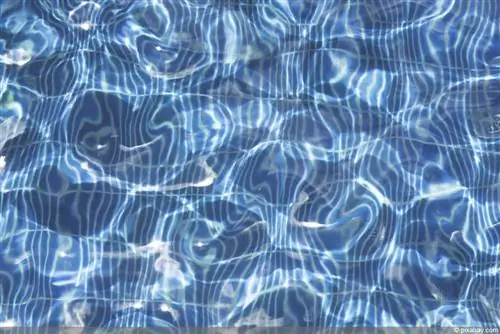
Reducing the chlorine concentration alone is not enough. The pH value must also have a certain value and must therefore always be taken into account when correcting the chlorine value. In order to achieve an ideal pH value that meets legal requirements, the value must first be determined using a rapid pH value test. Values that are too high or too low can be corrected with so-called pH minus and pH plus products. They are available in all well-stocked pool shops.
Leave out water
If the values are within the permitted range for pool water draining, you can begin. It should be taken into account that the water rushes out with enormous force and a channel can quickly appear in the ground, bending flowers and washing away the turf. It is ideal if a sewer or garden hose can be attached through which a small dose of water escapes. In any case, care must be taken to ensure that the water is evenly distributed in order to avoid flooding and to ensure that it sinks evenly into the ground.
The chlorine water is no longer harmful to the plants in the garden, so it can also be used to sprinkle the lawn or water flowers. Another drain variant offers a filter system with floor drain, reusable valve and “waste” function:
- Turn off filter pump
- Close all pipes - floor drain is turned to “open”
- Set the reusable valve to “Waste” (drain)
- Connect hose to drain/backwash opening
- Turn on filter pump
- Drain water
- Caution: the pump must not run dry when the pool is drained - so always switch it off shortly before it is completely drained
- Residual water is led into the floor drain using a broom or similar
Tip:
If you don't have a filter system with a "waste function", you can alternatively place a submersible pump in the pool and use it to pump out the water.

